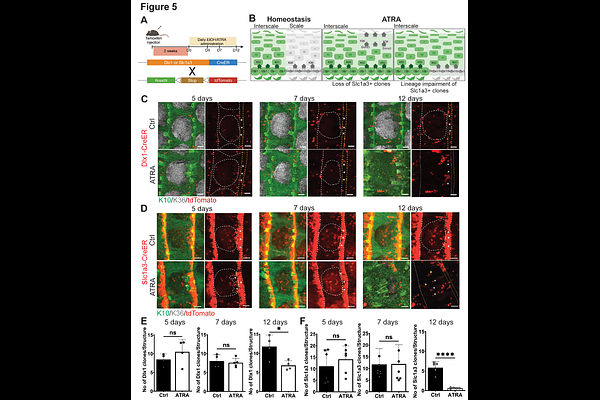Retinoic acid signaling alters the balance of epidermal stem cell populations in the skin

Retinoic acid signaling alters the balance of epidermal stem cell populations in the skin
Dumrongphuttidecha, T.; Ishikawa, M.; Cabezas-Wallscheid, N.; Sada, A.
AbstractAll-trans retinoic acid (ATRA), the active form of retinoids, is a potent anti-aging and anti-inflammatory agent with pleiotropic effects on various skin conditions. In the interfollicular epider-mis, tissue turnover is maintained by heterogeneous epidermal stem cell populations located at the basal layer. Mouse tail skin contains slow- and fast-cycling epidermal stem cell populations. The reduction of fast-cycling epidermal regions after ATRA application was first documented in 1987; however, stem cell-level changes remained largely unexplored. This study demonstrates that ATRA treatment leads to reversible changes which decrease the fast-cycling epidermal compartment while expanding the slow-cycling one. ATRA biases both slow- and fast-cycling epidermal stem cell populations toward differentiation, with the remaining Slc1a3-CreER+ fast-cycling clones in the basal layers biasing to the slow-cycling lineage. Similar changes in slow- and fast-cycling epider-mal stem cell populations are also evident in human primary cultures in vitro. These findings shed light on the role of retinoic acid signaling in regulating the balance of epidermal stem cell heteroge-neity and lineages.